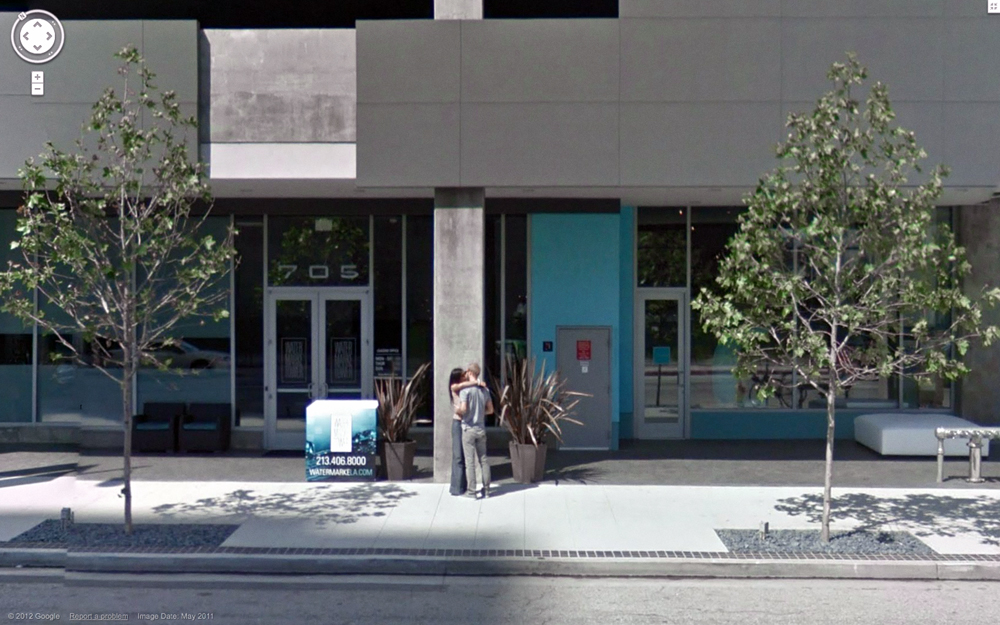In the midst of an early survey at the Musée d’art Contemporain, Jon Rafman’s nomination for the Sobey Art Award caps off a banner year for the Montreal-based artist. Born in 1981, Rafman is a poster child for what marketers have dubbed the Oregon Trail Generation. Wedged between Generation X and millennials, this group came of age with technology in school (including the eponymous text-based video game) and with the Internet, but their early development not conditioned by social media. This combination of native savvy and critical distance is at the crux of Rafman’s performative use of technology as material and subject in his works in video, photo, sculpture and installation.
Rafman’s perverse and darkly hilarious appropriation of the Internet first came to prominence in his work The Nine Eyes of Google Street View (2009–), a series of images captured from Google Maps, in which the artist seizes on unexpected moments caught by the dispassionate lenses of the Google car’s nine cameras: a reindeer galloping down a coastal highway, a naked figure stepping out of a second-story apartment window, various criminal activities and a number of images containing technical glitches and colour errors. Removed from their banal context as robotic surveillance, these unintended narrative moments and bizarre compositions form the ultimate photographic project, with all genres subsumed by Rafman’s reframing.
If Nine Eyes positions Rafman as the digital flâneur whose freedom to roam the Internet landscape is tethered to the anonymity of the viewer (the artist and us), elsewhere his forays into the extremes of the deep web position him more as ethnographer of the Internet. His video, Still Life (Betamale) (2013) assaults the viewer with images drawn from the forums of online social communities based around fetish, cosplay, and marginalized, often violent, sexual obsessions. The film’s inclusion of photographs of defiled workstations merges the real and the virtual, with nightmarish IRL situations grounding the implied freedom of virtual interaction and play.
This fusion of realities is a feature of Rafman’s exhibition at the MAC, where his most recent series of photographic tableaux, You are Standing in an Open Field (2015) juxtaposes still-life treatments of the “troll cave” environments depicted in Still Life (Betamale), replete with filthy keyboards, cigarette butts and empty Red Bull cans, against the backdrop of reproduced landscape paintings. Here, as with so much of his work, Rafman gestures towards romantic sublime through the disgusting and banal present.

 Jon Rafman, 705 W 9th Street, Los Angeles, California, United States, 2014.
Jon Rafman, 705 W 9th Street, Los Angeles, California, United States, 2014.







